|
|
What did the
official South Dakota state historians have to say about it?
Doane Robinson
(Secretary of the State of South Dakota History
Department, 1902-1926):
"At wounded Knee only one gun was fired by an Indian before the
soldiers attacked. Black Fox, from Cheyenne river, much excited fired his
rifle. Instantly the soldiers replied with their Hotchkiss guns and with
the first volley killed probably half of all the warriors, and the awful
massacre followed that will always be a disgrace to the American army."
Doane's son Will G. Robinson (Secretary of the South
Dakota State Historical Society, 1946-1968), who followed in his father's
footsteps as state historian, wrote,
"MY IMPRESSION is that here we have a battle - distinguished by two
things (1) that it was the last between whites and redmen on any scale (2)
that it partook of none of the aspects of a battle between armed and
inspired combatants and resulted in the wanton killing of over 100 wholly
innocent people...It certainly would be devoid of good judgment, an
affront to both Indians and to the historic fact if it was a monument to
the army troops who participated. This thus eliminates anything from the
picture except, as I see it, a memorial to the dead Indians
. It is the army viewpoint that they are not only dead but bad Indians and
deserved what they got. That is not realistic but it is the apparent army
line dating back into antiquity. It is the basis of their denial of the
right of the survivors to compensation. It is not based on fact or sound
logic but on a guilt complex. That guilt complex was then so
strong that they gave out congressional medals of Honor to the
participants in the Wounded Knee affair (eighteen) and 12 more to the
people who did next to nothing at the Mission and White River fracas later
of which were of minor importance. They built a great monument at
Ft. Riley eulogizing the dead soldiers in this lamentable affair.
When one considers that in World War II, sixty four thousand South
Dakotans were engaged for the better part of four years and that they
received only three congressional medals the incongruity of the Army's
attitudes toward Wounded Knee is emphasized. "
State Historian Will Robinson :
"General Miles had specifically ordered that no troops were to go into
an Indian encampment. Forsythe decided that they had not got all of the
guns and that they would send men into the encampment to get the rest of
the guns. Had that specific violation of General Miles orders not been
done, there would have been no "affair at Wounded Knee."
John Collier, The Commissioner of Indian Affairs said
and quoted the following during his testimony at the Wounded Knee
compensation hearings in 1938:
"The Wounded Knee incident properly has been called a 'massacre.' The
historical facts are here set down as a basis for judgment by the
Congress."
John Collier, The Commissioner of Indian Affairs :
"The unrest and distress among the Sioux bands had increased in its
intensity through a number of years prior to 1890. The causes of the Sioux
misery need not be here recapitulated. There had been ruthless violations
of treaties and agreements, and numerous administrative abuses. It
scarcely was possible for the Indians themselves to know what spots they
were permitted to inhabit and what they were forbidden to in habit, so
sweeping and so casual had been the violations and unilateral abrogations
of contract on the part of the Government. One of the responses of the
Sioux Indians, as of numerous other tribes similarly distressed, was the
flight into Messianic religious revivals, the Messianic revival among the
Sioux was know as the Ghost Dance Religion."
John Collier, The Commissioner of Indian Affairs :
"It is important to note that these Messianic revivals had taken place
from time to time for many years among the Indian tribes, and in no
instance had they thrown the Indians into aggressive warfare with the
whites. Neither acts of war, not massacres nor depredations, had resulted
from the Messianic revivals. This record was known to the Government at
that time."
John Collier, The Commissioner of Indian Affairs :
"Four hundred Sioux, in family groups (whole families with all their
transportable possessions), assembled for the Ghost Dance ceremonies, were
shot down by Government troops - mass firing into the congregation, and
then an individual manhunt (and women and baby hunt.)"
How
did each of these men summarize the events?
State Historian Will Robinson
observed:
"Obviously the army is never going to go one inch in conceding what
General Miles, apparently as commander, was prepared to concede. That the
fatal event would never had occurred had the white commander obeyed his
instructions."
State Historian Will Robinson :
"The Battle of the Little Big Horn itself was not a massacre, but the
aftermath of the battle was not pretty. The Wounded Knee more clearly
falls with the meaning of the word Massacre..."
United States Senator Karl Mundt :
"In an effort to compromise differences as to the actual nomenclature
to be used, I have received from the Indians assurance that they would
recognize the event as an 'Incident.' Such a compromise would be
acceptable to the Army. The Incident is not one in which we can take great
pride, but to overlook it altogether at a time when we memorialize the
Battle of the Little Big Horn and other battles in which the white man's
roll is perhaps of a more honorable nature is to pervert and distort the
chronically of history. We live by our mistakes as well as our virtues."
General Colby :
"This Indian war might be regarded as the result of a misconception or
a misunderstanding of the Indian character, and of the real situation and
condition of things on the Reservations; and the terrible and needless
slaughter was the result of a mistake. The general condition of things,
however, which made such misunderstanding and mistake possible was the
result of the Indian policy of the Government."
General Colby :
"The whole difficulty might be summarized as the fault of the ills,
resulting from a non-performance of the treaty stipulations on the part of
our Government during the past thirteen years. The Sioux Nation as such,
was not really on the war path during any of this time. A portion of them
was justly excited at the assassination of their famous old Medicine Man,
his children and followers on the Grand River. And their animosity was
provoked by the useless massacre of Big Foot and his heroic band on the
banks of Wounded Knee. But the vengeance of the Sioux Nation was never
directed to the white settlers adjoining the reservations in Dakota,
Wyoming and Nebraska. There were no blazing cabins, no desolated
settlements, no fields crimson with the blood of the frontiersmen. Not a
single settler was killed, nor a white man's home disturbed during the
whole trouble. The assassination of Sitting Bull, his sons and others of
his band, and the massacre of Big Foot and the two hundred or more
partially armed warriors and defenseless women and children, are the dark
and bloody tragedies resulting from the grievous errors of the men charged
with the administration of the Government, and will forever stain the soil
of America, and add to the infamy of the dark spots on the record of our
republic in its dealings with the Spartan race of the Western Continent."
General Colby :
"January 15th...General Miles had another consultation with the Indians
in regard to the treatment which they were to receive, and the contracts
and treaties which the Indians claimed had been violated. There were
present, Little Wound, Two Strike, Big Road, Crow Dog, Kicking Bear, Eagle
Pipe and other chiefs, who showed a very friendly disposition, and
expressed great confidence in General Miles. The General was pleased with
their disposition and guaranteed that in the future the government would
carry out its contracts and treaties. He assured the chiefs that they
should be treated fairly and honorably, and that their rights would be
guarded. The best of the feeling seemed to be manifested, and General
Miles at once had the Quartermaster issue rations of beef, coffee and
sugar, and sent the same to the hostile camp. This was the end of the
Sioux Indian War of 1890-'91. The Nebraska National Guard, under my
command, were at once returned to their homes."
The stories of women and children are often overlooked in accounts of
war. I wanted to find out what had happened to my friend Vic Runnel's uncle,
James High Hawk, and this is what I found:
Major McLaughlin , who was the Indian agent in charge of
the Standing Rock Agency in 1890, gathered testimony of Wounded Knee
survivors i 1921 for a proposed compensation bill. He wrote:
"James High Hawk, of Cherry Creek, 35 years of age, states that he was
in the Wounded Knee affair with his parents; that his father, mother and
grandmother were killed in the conflict and he [was] wounded in the right
thigh and right ankle, and his younger brother was wounded from which
[wounds] he died two years later...Alex High Hawk of Cherry Creek, 42
years of age, is an older brother of James High Hawk, and stated he was
wounded in the left ankle...I also met Jonah High Hawk of Cherry Creek, 33
years of age, brother of the two preceding survivors of the Wounded Knee
affair, who was only four years of age at that time and had escaped injury
and had very little recollection of what transpired there."
This is what happened, from the memory of his older brother James High
Hawk, "
There were some small children playing around, and I was one of them. I
had a little brother who was nursing then - an infant - and one brother a
little bit larger, and I was a little bit larger than he was. He was four
years old at the time. I was wounded twice. My mother was wounded, though
she kept trying to take care of her little family, then they came again and
shot her and my infant brother."
Finding this story about the uncle of a friend of mine, Wounded Knee
suddenly became real, personal and immediate. Wanting to find more accounts
of the wounded, I looked for the records of the white people who had cared
for them. The army surgeon, Frank Ives , kept a careful
record of all the Indians he treated after Wounded Knee, and that journal is
housed in the South Dakota Historical Society. Elaine Goodale
Eastman's experience has been published in a book, Sister of the
Sioux. The collection of Eli Ricker , Nebraska lawyer and
judge who took massive testimony from people who had been at the Wounded
Knee massacre, is in the Nebraska Historical Society, and includes the
account from Mrs. Keith , who nursed the wounded. Each of
these three people, writing separately, talk about the same people who were
injured, and the same conditions:
The report of army surgeon Ives begins:
No. 1. Has-a-dog Age 17
Gunshot wound upper lobe of left lung
Jan. 5 - Hemorrhage - died.
No. 5 Child - female - 6
"Holy-bone"
com'd fracture upper third left thigh
Mrs. Keith
"who worked among these poor little things all that night feeding them
and ministering to their extreme thirst tells me that their cries, faint
from weakness and long suffering, were something never to be effaced from
memory." writes Eli Ricker. "Infants from a few months to tender years of
age were shot in all parts of their bodies...The battle had begun early in
the day and these children were received at the Agency about 10 o'clock.
p.m."
Elaine Goodale Eastman described her experience in
treating the Indians:
"Long after dark the Seventh cavalry appeared, bringing their own dead
and wounded and thirty three Dakotas, most of them severely wounded women
and children. I can never forget Mr. Cook's incredulous horror when he
came upon the poor creatures in their bloody rags, huddled on the bare
boards of several army wagons, chilled to the bone and too stunned in
their culminating misfortunes to utter a sound, until the torture of fresh
movement wrung from them screams of agony. The horses had been taken out
and the helpless prisoners left alone in darkness and cold, while army
surgeons were busy with their own wounded."
Keith :
"These little objects of humanity could not be satisfied by eating and
drinking; it appeared that their long fast had created in them excessive
thirst and hunger that could not be appeased."
Eastman :
"Pews were torn from their fastenings and armfuls of hay fetched by
Indian helpers. Upon a layer of this we spread quilts and blankets taken
from our own beds. The victims were lifted as gently as possible and laid
in two long rows on the floor - a pitiful array of young girls and women
with babes in their arms, little children, and a few men, all pierced with
bullets or terribly torn with pieces of shell, and all sick with fear."
Keith :
One of these children was under a year of age., because it was wrapped
up after the Indian custom. This was badly wounded in the lower bowels.
She does not know whether it lived.
Ives :
18, Baby - male - 1 year with Mother
1 gunshot wound through left buttocks
2 gunshot wound through scrotum
Both wounds made by same ball
Jan. 5 supporation in both
hernia left testicle
Dressed
jan. 9 Transferred to Indian camp
Keith : The mother was in the hospital. Mrs. K. does not
know whether she recovered, but she thinks she did.
Ives : 19 Squaw
"No name woman"
has infant with
Wound through right hand
between meta carpal bones
Jan. 5 No suppuration doing well
Keith : tells of a deaf and dumb girl that was among the
wounded in the hospital at the Agency after the battle of Wounded Knee. The
nurses tried hard at first to attract her notice by speaking loud to her,
while she continued to moan and groan piteously without giving recognition
to their efforts. At last an old woman told them of her condition.
Ives :
13. Girl - Deaf & dumb - 12 yr.
1 wound through right wrist
2 Flesh wound right side
Jan. 5 Supporation both wounds
doing well
Eastman :
Our patient cried and moaned incessantly, and every night some dead
were carried out. In spite of all we could do, most of the injuries proved
fatal. The few survivors were heartbroken and apathetic, for nearly all
their men had been killed on the spot.
Keith :
says she is sure there was not a man in the hospital. This shows hoe
effectually the soldiers killed all the men who could not escape. They did
not spare age or sex.
Ricker:
Mr. Keith " says that before the battle he was
passing some soldiers of the 7th cavalry at the agency and he heard one
of them remark that if they could just get to the Indians "they would give
them hell." These Indians (Big Foot) I have been told by another were in
the Custer massacre, and these soldiers were desirous for an opportunity
to square accounts with them."
What Should
be Done
I was amazed to find that a whole series of bills to
compensate the survivors had been considered by Congress since 1917,
and today, 100 years later, the Indian people have not yet received
a simple apology from the government for the massacre, nor has there
been any compensation for the destruction of life and property. I
can't imagine anyone more fitting to take our direction from than
General Nelson A. Miles, commander of the Military Department of the
Missouri.
General Miles wrote:
The action of the Commanding Officer, in my judgment at
the time, and I so reported, was most reprehensible. The disposition of
his troops was such that in firing upon the warriors they fired directly
towards their own lines and also in the camp of the women and children,
and I have regarded the whole affair as most unjustifiable and worthy of
the severest condemnation.
General Miles :
"In my opinion, the least Government can do is to make a suitable
recompense to the survivors who are still living for the great injustice
that was done them and the serious loss of their relatives and property -
and I earnestly recommend that this may be favorably considered by the
Department and by Congress and a suitable appropriation be made."
General Miles wrote these words in 1917. Three years later General Miles
again wrote to the Commissioner of Indian Affairs regarding another attempt
at a compensation bill for Wounded Knee survivors. Perhaps out of
frustration at the failure of the previous bill, this time the words of the
commanding general are even stronger:
General Miles : The act, he said, seems to me
"of imperative importance and justice...to atone in part for the cruel
and unjustifiable massacre of Indian men and innocent women and children
at Wounded Knee on the Red Cloud Reservation, South Dakota."
Clearly in this enlightened time [1990], when the United States government
has made compensation to the Japanese for their property which was lost
during World War II, when the army is willing to look at it's mistake in Mai
Lai and Panama, and when the Soviet Union publicly and with compensation,
has acknowledged a massacre it committed in Poland, we [Wasichu?] can do no
less than the justice to the Indians which the commanding general [Miles]
demanded eighty years ago.
During the 100th anniversary of the Massacre at Wounded Knee, I would ask
the United States to offer a public apology to the Sioux Nation, *and to
rescind the medals awarded for the massacre.* I would further ask the United
States government to make a public apology and to finally award the long
overdue compensation [for property destroyed/stolen from the Nation at
Wounded Knee] to the Wounded Knee survivors.
As one of the treaty commissions who negotiated with the Sioux Indians
concluded:
'Our country must forever bear the disgrace and suffer the retribution
of its wrong-doing. Our children's children will tell the sad story in
hushed tones, and wonder how their fathers dared so to trample on justice
and trifle with God.'
Wounded Knee
Hearing Testimony
1
-
2
-
3
-
4
-
5
White Eagle Soaring: Dream Dancer of the 7th Fire

See
Real Dream Catchers' links
This is a crazy world. What can be
done? Amazingly, we have been mislead. We have been taught that we can
control government by voting. The founder of the Rothschild dynasty, Mayer
Amschel Bauer, told the secret of controlling the government of a nation
over 200 years ago. He said, "Permit me to issue and control the money of
a nation and I care not who makes its laws." Get the picture? Your freedom
hinges first on the nation's banks and money system. That's why we
advocate using the
Liberty Dollar, to understand the
monetary and banking system. Freedom is connected with
Debt Elimination for each individual. Not
only does this end personal debt, it places the people first in line as
creditors to the National Debt ahead of the banks. They don't wish for you
to know this. It has to do with recognizing WHO you really are in
A New Beginning: A Practical Course in Miracles.
You CAN
take
back your power and
stop volunteering to pay taxes to the collection
agency for the BEAST. You can take back that which is yours,
always has been yours and use it to pay off your debts. And you can send
others to these pages to discover what you are discovering.
I Want The Earth Plus 5% --
an allegory that's not a fairy tale.
Why Taxes Are Not Necessary
Behind the Stock Market Illusion
The Price of Free Corn
 Get
a course to promote your business online, explode your sales Get
a course to promote your business online, explode your sales
Get
software to promote your business online in less time
 Get
software to streamline your business and run it hands free. Get
software to streamline your business and run it hands free.
Disclaimer: The
statements on www.real-dream-catchers.com have not been evaluated by the FDA.
These dream catchers are not intended to diagnose nor treat nor cure any
disease or illnes
© 2007, Allen
Aslan Heart / White Eagle Soaring of the
Little Shell Pembina Band,
a
Treaty
Tribe of the Ojibwe Nation
|

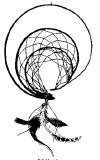
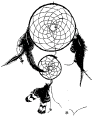
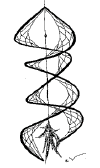
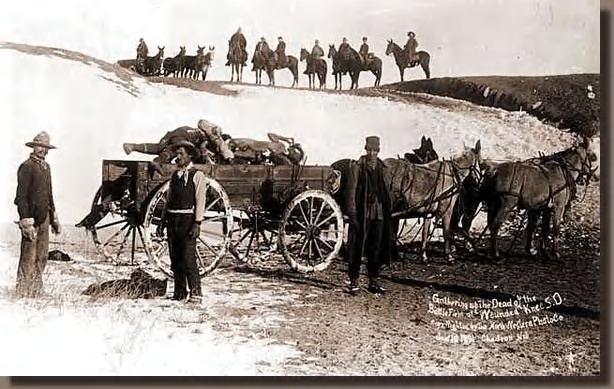


 ONE
GREAT DAY is a diversified ever evolving four piece based in Minneapolis. We
have humbly embraced the idea that music is bigger than us all. Our style varies from acoustic pop
to electric funk blues. If it feels good then we'll play it. This is our identity. Just listen to our music and enjoy it as it
is. God Bless all!!!
ONE GREAT DAY
!!!
ONE
GREAT DAY is a diversified ever evolving four piece based in Minneapolis. We
have humbly embraced the idea that music is bigger than us all. Our style varies from acoustic pop
to electric funk blues. If it feels good then we'll play it. This is our identity. Just listen to our music and enjoy it as it
is. God Bless all!!!
ONE GREAT DAY
!!!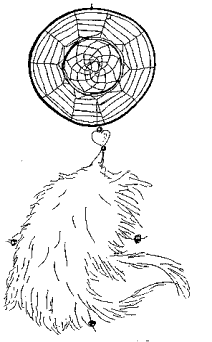
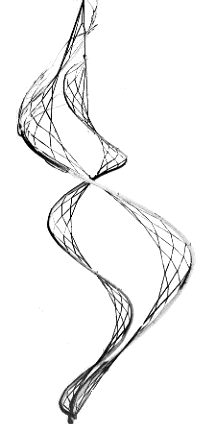
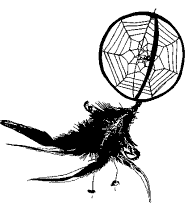
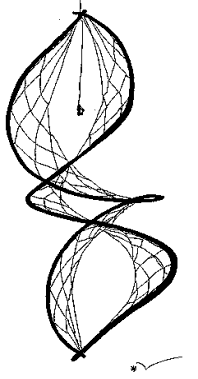

 Get
a course to promote your business online, explode your sales
Get
a course to promote your business online, explode your sales
 Get
software to streamline your business and run it hands free.
Get
software to streamline your business and run it hands free.